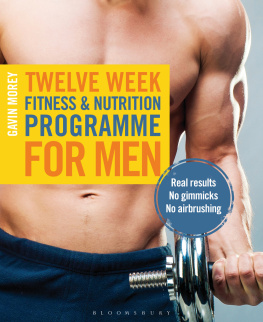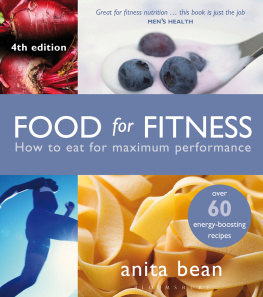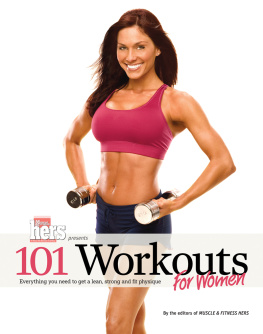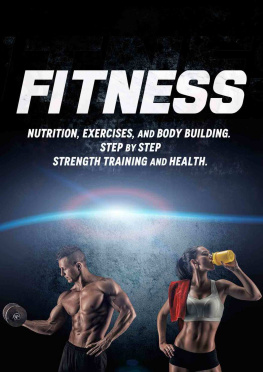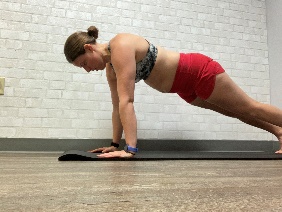Table of Contents
Chapter 1: Body Composition Measurements.. Pg. 1 - 11
Chapter 2: Goals Setting Pg. 12 - 14
Chapter 3: Desired Body Weight and Body Fat. Pg. 15 - 18
Chapter 4: Calculating Macros Pg. 19 - 23
Chapter 5: Grocery Shopping and Meal Prep. Pg. 24 - 27
Chapter 6: Track and Measure your Macros. Pg. 28 - 30
Chapter 7: Food Choices .. Pg. 31 - 33
Chapter 8: Cardio Pg. 34 - 36
Chapter 9: Heart Rate.. Pg. 37 - 39
Chapter 10: Health and Fitness Myths. Pg. 40 - 42
Chapter 11: Recovery, Mobility, and Stretching Pg. 43 - 48
Chapter 12: Last Words.. Pg. 49 - 51
12-Week Fitness Program Pg. 52 - 88
Recipe Ideas .. Pg. 89 - 113
Appendix: Forms Pg. 114 - 119
Glossary. Pg. 120 121
Chapter 1
Body Composition Measurements
How to Get Started
Hi all, and welcome to my 12-week fitness program. In the following 12 Chapters I will be guiding you through how to put together a well-rounded wellness journey with all of my fitness and nutrition tips.
The first thing we are going to do is go over how to get your measurements done. This should be done first thing in the morning before eating or drinking. Use the form on the following page to record your data.
- Measure how tall you are
- Use a scale to weigh yourself
Use the tape measure in the box to get the following measurements. There are pictures on how to get each current measurement on the following page.
- Waist
- Hip
- Thigh
- Upper Arm
- Any other measurement that you would specifically like to track
- Last thing we are going to track is how many pushups you can do. This will also be explained on the measurements page.
- Write down 1-3 Goals you have for yourself and this program. We will talk later about goal setting.
How to Take Measurements
Waist Measurement: This measurement should be taken around the smallest circumference of your stomach/waist.
Hip Measurement: This will actually be more a measurement of your butt. It should be the largest circumference around your hip.
Thigh Measurement : Find the largest circumference of your thigh right under your butt. Stand with your feet slightly apart.
Upper Arm Measurement: Extend arm out with palm facing up and find the midpoint between your elbow and shoulder or the largest circumference of your arm.
Pushup Test : You may do this on your knees or feet. Start in the down position and push up and when you go back down, your chin must touch the floor. This is one rep. Continue until you are fatigued or need more than 3 sec rest at top or bottom.
Results
Date: _____________________________
Height: ____________________________
Weight: ____________________________
Measurements:
Right | Left |
Waist |
Hip |
Thigh |
Upper Arm |
Other |
Pushup Test: ________________________
Goals:
1.__________________________________________________________________________________________
2.__________________________________________________________________________________________
3.__________________________________________________________________________________________
Hip to Waist Ratio
Now that we have all of your results written down, we are going to do some equations to figure out what they all mean. There will be an equations page to fill your information on.
First, we are going to calculate your hip to waist ratio . This is very simple; all we are going to do is divide your waist measurement by your hip measurement.
- Example: 81cm/105cm= .77
For men we want it to be 102 or lower
For Women we want it to be 88 or lower
Body Mass Calculations
Next, we are going to calculate your BMI . To do this all we have to do is divide your height by your weight. But first we need to convert them into Kg and m2
Weight in pounds/2.2= weight in Kg
- Example: 171.1lb/2.2= 77.77kg
Height in feet*12 then add inches
- Example 58= 5*12+8= 68in
Height in In*0.0254 =m
- Example 68in*0.0254=1.72m
To get M2, multiple by itself
- Example: 1.72*1.72= 2.95m2
Now we divide weight in kg by m2
- Example: 77.77kg/2.95m2= 26.36 BMI
BMI Classifications are:
Underweight: less than 18.5
Normal: 18.5-24.9
Overweight: 25-29.9
Obese: 30 or greater
Calorie Intake
The last measurement we are going to calculate is how many calories we should be eating and then adjusting them to get our desired outcome. We will use some numbers we just found out in our next equation so make sure you write them down on the equations page.
Harris- Benedict Equation:
Men : 66.47+13.75( weight in kg ) +5 ( height in cm )-6.8( age in years )
Women : 665+9.6( weight in kg ) +1.8( height in cm ) -4.7( age in years )
- Example: 665+9.6(77.72) +1.8(68)-4.7(32) =
665+746.112+122.4-150.4= 1518kcal
This number is the number of calories that your body burns at rest. This is called your basal metabolic rate. Next, we will multiple that by your activity number to find out how many calories you should be consuming daily.
If you take exercising out, how active are on a daily basis? For example, if you are someone who sits at a desk all day, but still goes to the gym every day. You would be considered low activity since you sit most of the day. If you were someone who has an active job that keeps you walking or in motion most of the day, then you would be considered very active. (If you are not sure, go with the lower activity)
Pick one activity level from below:
Sedentary (little to no activity) - 1.2



